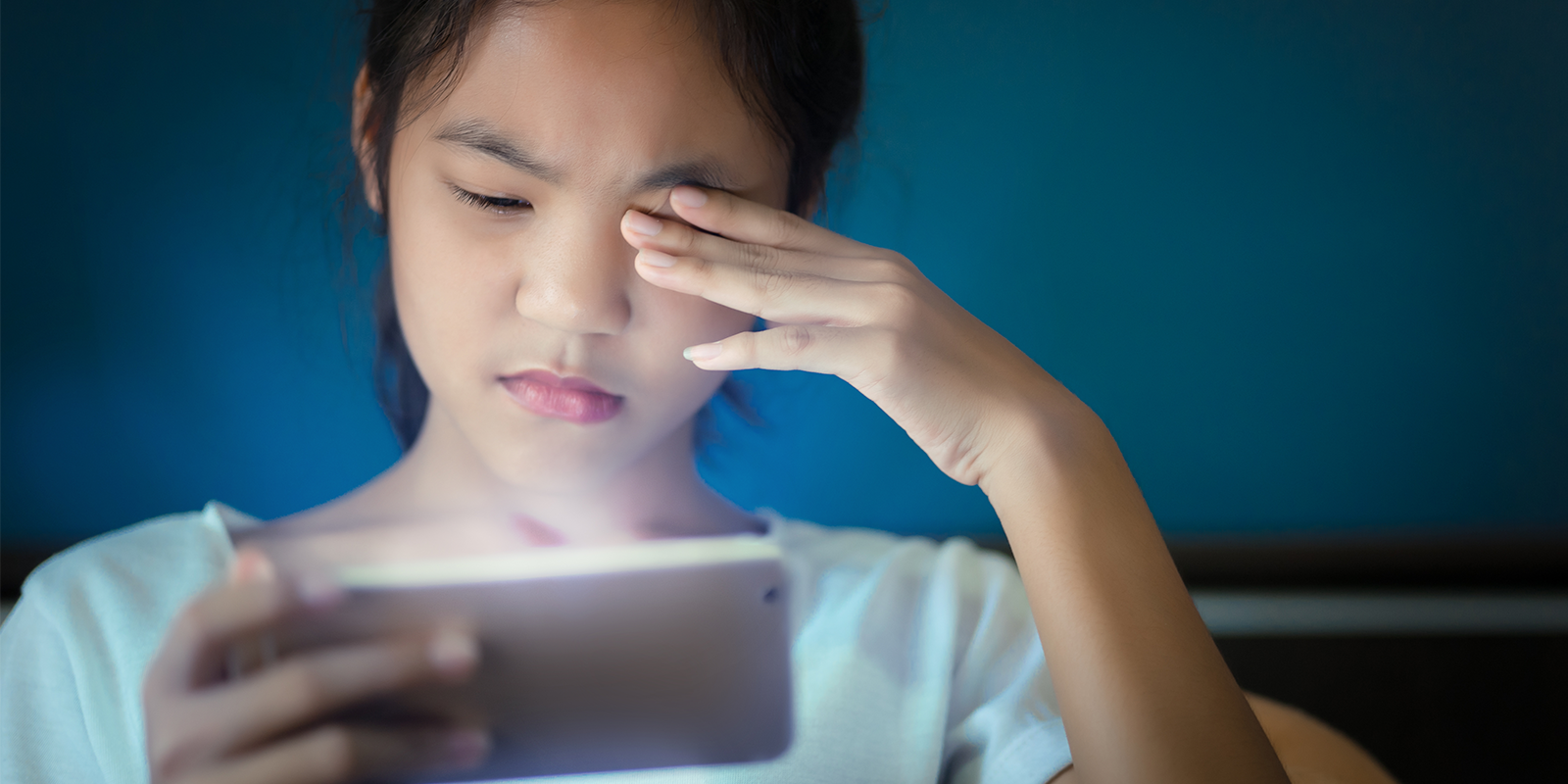Blue light exposure is a growing problem as we begin to spend more time than ever in front of digital screens. Blue light is the high-energy visible light usually defined as light with wavelengths ranging from 380 to 500 nanometers (nm).
Most of the blue light exposure we receive comes from the sun, where 15 minutes in the sun is the same as 10 hours in front of a screen. Think about all the kids you know playing Fortnite. We are also exposed to additional sources of blue light such as CFL and LED light bulbs.
The biggest culprit is the amount of time we spend in front of computer screens and digital devices. Now that the world has digitized most people are working in front of a screen for many hours a day, while many use phones, tablets, and computers both at work and in the hours spent at home.
Effects of Blue Light
Blue light causes several physical changes in the body that can have long-term effects as well as tertiary effects on behavior. These effects are:
- Retinal Effects — Blue light can cause structural and functional damage to ocular tissues
- Glare and Scatter — Blue light creates extra strain on the eye
- Circadian Rhythm — The body uses blue light exposure to help regulate sleep, too much exposure close to bed lowers the quality of sleep.
Who Is at the Greatest Risk From the Effects of Blue Light?
There are multiple factors that go into being more susceptible to blue light, the older you get the more your lenses naturally block, but behavioral and demographic factors can increase the risk to the adverse effects of blue light.
Who Has Increased Risk:
- Children
- Those with lightly pigmented irises
- Post cataract patients
- Smokers
- Those with family history of AMD
- Those with poor diets
- Outdoor workers
- Heavy screen viewers
How to Reduce Exposure to Blue Light
There are a few easy ways to help reduce the amount of blue light we are exposed to on a daily basis. These are:
- Sunglasses
- Wearing a hat outdoors
- Photochromic lenses
- Specialty coatings
- Specialty materials
- Reducing the intensity of screens and indoor lighting
For more in-depth details about the impact of blue light on your patients, our white paper What We Know — And Don’t Know — About Blue Light offers a more comprehensive examination about blue light, the damage it can cause, and those that face the highest risk.

